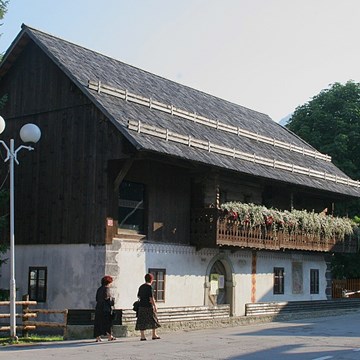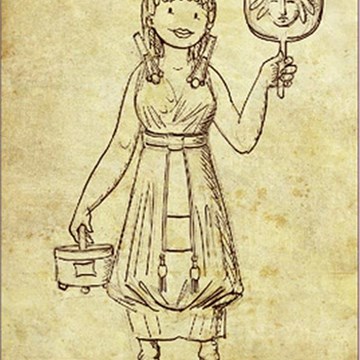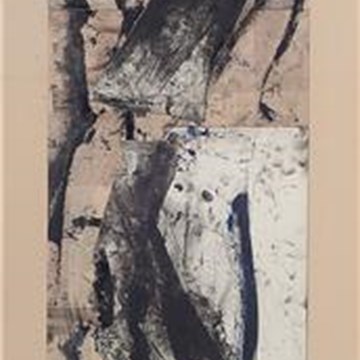Gerhard Losemann - Form+Farbe in der RUHR GALLERY MÜLHEIM - MMKM Museum Moderne Kunst Mülheim
Gerhard Losemann ist ein renommierter Künstler aus Duisburg und bekannt für seinen Entwurf des Mahnmals für die Opfer der Loveparade-Katastrophe. In der Ausstellung "FORM+FARBE" werden Malerei und Skulptur von Losemann gezeigt. Seine Werke zeichnen sich durch ein vielfältiges motivisches Repertoire und handwerkliche Präzision aus. Losemann ist seit vielen Jahren in der Kunstszene Nordrhein-Westfalens aktiv und war unter anderem als Kurator tätig. Er hat auch die Galerie DU/ART in Duisburg gegründet, die sich der Bewahrung und Präsentation von Werken verstorbener Künstler-Kollegen widmet. Losemann hat sich über mehr als 50 Jahre künstlerischen Schaffens hinweg mit verschiedenen grafischen Techniken auseinandergesetzt und arbeitet seit 2004 auch mit dem Computerdruck. Seine Vorliebe, aus Vorhandenem neu zu schöpfen und seriell zu arbeiten, kommt in seinen Werken besonders zum Ausdruck.
Die Vernissage der Ausstellung findet am Sonntag, den 2. Juli 2023 von 16 bis 18 Uhr statt. Die Besuchszeiten der Ausstellungen sind donnerstags und freitags von 16 bis 18 Uhr, samstags und sonntags von 14 bis 18 Uhr sowie nach Vereinbarung. Der Eintritt zur Ausstellung und Führungen sind wie immer kostenfrei. Als Einführungsrednerin für die Ausstellung von Gerhard Losemann konnte Dr. Christine Vogt, die Direktorin der LUDWIGGALERIE Schloss Oberhausen, gewonnen werden.
Eckpunkte Vita von Gerhard Losemann:
Duisburg, Folkwangschule Essen, Kunstschule Düsseldorf-Niederkassel, Sprecher der Duisburger Sezession, Sprecher der Interessengemeinschaft Duisburger Künstler, mehrmals gewählter Vertreter der Duisburger Künstler im Kulturbeirat der Stadt Duisburg, langjährige Lehrtätigkeit an den Volkshochschulen in Duisburg und Oberhausen, Mitbegründer der Interessengemeinschaft Duisburger Künstler und der Gruppe/Galerie „nos“, Mitglied des Vorstandes im Düsseldorfer Malkasten, Künstleraustausch zwischen der Stadt Duisburg und dem Künstlerverband der UdSSR, Ehrennadel der Stadt Oberhausen, Mercator-Ehrennadel der Stadt Duisburg, Verdienstmedaille des Verdienstordens der Bundesrepublik Deutschland.
Gerhard Losemann is a renowned artist from Duisburg, Germany, known for his design of the memorial for the victims of the Loveparade tragedy. The exhibition "FORM+FARBE" showcases his paintings and sculptures. Losemann's works are characterized by a diverse range of motifs and meticulous craftsmanship. He has been active in the art scene of North Rhine-Westphalia for many years and has worked as a curator. He also founded the DU/ART gallery in Duisburg, which is dedicated to preserving and exhibiting works of deceased artist colleagues. Throughout his more than 50 years of artistic creation, Losemann has explored various graphic techniques and has been working with computer printing since 2004. His preference for creating anew from existing elements and working in a serial manner is particularly evident in his works.
The opening reception of the exhibition will take place on Sunday, July 2, 2023, from 4:00 to 6:00 PM. The visiting hours for the exhibition are Thursdays and Fridays from 4:00 to 6:00 PM, Saturdays and Sundays from 2:00 to 6:00 PM, and by appointment. Admission to the exhibition and guided tours are free, as always. Dr. Christine Vogt, the director of LUDWIGGALERIE Schloss Oberhausen, has been chosen as the keynote speaker for Gerhard Losemann's exhibition.
Key points of Gerhard Losemann's biography:
- Born in Duisburg
- Studied at Folkwangschule Essen and Kunstschule Düsseldorf-Niederkassel
- Served as the spokesperson for the Duisburger Sezession
- Served as the spokesperson for the Interessengemeinschaft Duisburger Künstler (Association of Duisburg Artists)
- Elected multiple times as a representative of Duisburg artists in the Kulturbeirat (Cultural Advisory Board) of the city of Duisburg
- Long-term teaching position at the Volkshochschulen (Adult Education Centers) in Duisburg and Oberhausen
- Co-founder of the Interessengemeinschaft Duisburger Künstler (Association of Duisburg Artists) and the group/gallery "nos"
- Member of the board at the Düsseldorfer Malkasten (an artists' association in Düsseldorf)
- Facilitated an artist exchange program between the city of Duisburg and the artist association of the USSR
- Received the Ehrennadel der Stadt Oberhausen (Honor Needle of the City of Oberhausen)
- Received the Mercator-Ehrennadel der Stadt Duisburg (Mercator Honor Needle of the City of Duisburg)
- Awarded the Verdienstmedaille des Verdienstordens der Bundesrepublik Deutschland (Merit Medal of the Order of Merit of the Federal Republic of Germany)
Gerhard Losemann est un artiste de renom de Duisburg, en Allemagne, connu pour sa conception du mémorial en hommage aux victimes de la catastrophe de la Loveparade. L'exposition "FORM+FARBE" présente ses peintures et sculptures. Les œuvres de Losemann se caractérisent par une grande diversité de motifs et un travail minutieux. Il est actif depuis de nombreuses années dans le milieu artistique de la Rhénanie-du-Nord-Westphalie et a travaillé en tant que commissaire d'exposition. Il a également fondé la galerie DU/ART à Duisburg, qui se consacre à la préservation et à la présentation des œuvres d'artistes décédés. Tout au long de ses plus de 50 années de création artistique, Losemann a exploré différentes techniques graphiques et travaille également avec l'impression informatique depuis 2004. Sa préférence pour la création à partir d'éléments existants et son travail en série sont particulièrement visibles dans ses œuvres.
Le vernissage de l'exposition aura lieu le dimanche 2 juillet 2023, de 16h à 18h. Les horaires de visite de l'exposition sont les suivants : le jeudi et le vendredi de 16h à 18h, le samedi et le dimanche de 14h à 18h, ainsi que sur rendez-vous. L'entrée à l'exposition et les visites guidées sont gratuites, comme toujours. Le discours d'introduction pour l'exposition de Gerhard Losemann sera donné par le Dr Christine Vogt, directrice de la LUDWIGGALERIE Schloss Oberhausen.
Les points clés de la biographie de Gerhard Losemann :
- Né à Duisburg
- Études à la Folkwangschule d'Essen et à l'école d'art de Düsseldorf-Niederkassel
- Porte-parole de la Duisburger Sezession
- Porte-parole de l'Interessengemeinschaft Duisburger Künstler (Association des artistes de Duisburg)
- Élu à plusieurs reprises en tant que représentant des artistes de Duisburg au Kulturbeirat (Conseil consultatif culturel) de la ville de Duisburg
- Enseignement à long terme dans les Volkshochschulen (Centres d'éducation des adultes) de Duisburg et Oberhausen
- Co-fondateur de l'Interessengemeinschaft Duisburger Künstler (Association des artistes de Duisburg) et du groupe/galerie "nos"
- Membre du conseil d'administration du Düsseldorfer Malkasten (association d'artistes à Düsseldorf)
- Facilitation d'un programme d'échange d'artistes entre la ville de Duisburg et l'association d'artistes de l'URSS
- Réception de l'Ehrennadel der Stadt Oberhausen (Médaille d'honneur de la ville d'Oberhausen)
- Réception de la Mercator-Ehrennadel der Stadt Duisburg (Médaille d'honneur Mercator de la ville de Duisburg)
- Décoration de la Verdienstmedaille des Verdienstordens der Bundesrepublik Deutschland (Médaille du mérite de l'Ordre du mérite de la République fédérale d'Allemagne)
Dr. Christine Vogt, Director of LUDWIGGALERIE Schloss Oberhausen
Speech on July 2, 2023, at the opening of the exhibitions by Gerhard Losemann ("FORM+COLOR") and Klaus Wiesel ("NOW NEW") at the Galerie an der Ruhr/Mülheim
Dear Mr. Losemann, I am also delighted to be here, and I must say that the exhibition has turned out to be magnificent. What impressed me even more was your home, a work of art in itself, where one could truly see the richness and creativity of your life in the private spaces. And now, we get a glimpse of it here. One should actually start from the top. In the cabinet room, there are early ink drawings, early works, and as I looked at them, I thought, "Everything is already there!" Everything that later gets further elaborated in your works and finds its own facets is already present in these drawings. You can see the focus on lines, the light touch of drawing, the connection to nature, and in my favorite little drawing, a watercolor gradient in the background forming a transparent flow. These elements form the basis of his works, which, from my perspective, are as diverse as they are. So, once you have looked at these intricate patterns of lines and their ornamental moments, you can start with the larger pieces down below.
Of course, Gerhard Losemann is not just someone who has contributed significantly to cultural policy. We in Oberhausen owe him for the Artothek and the excellent setup of the art school. Many people from Oberhausen have him to thank for learning graphic art, learning about art, and learning to draw. It's wonderful that all of this is still united here in the castle. We thank him sincerely for that.
But he is also someone who has created impressive monuments. Let's stay in my city for a moment: When you walk out of the train station, Oberhausen-West, you enter a difficult neighborhood called Altenberg. They wanted to beautify the area, but they discovered that the zinc factory had left all its waste in the ground - contaminants, special burdens - so they had to build a wall. And Gerhard Losemann went there and created a rotation of steles titled "Movement," which are specially illuminated, playing with light and darkness, something significant in his works, and breaking open the rigidity, especially the brick wall that trapped all the toxic elements behind it. He opened it up, made it more inviting, transforming a place that was not pleasant, perhaps even frightening, into a place with greatly improved amenities.
Another sculpture was the fountain in Sterkrade, where he created a water feature. As you can see in the designs, Gerhard Losemann always relates his works to nature. In this fountain, there is a tree that he refers to. There is always a sensitive engagement with the location and the environment. For example, in this fountain, he incorporated the curvature of the existing cobblestones. Then came the water feature, which - and here again, his preference for lines - flowed out through clear, smooth lines, forming a kind of grid or diagonal parallel structure. This recurring theme is also found in his paintings and other works.
There are other sculpture projects as well, notably in Duisburg. Not too long ago, he designed the memorial for the Love Parade disaster, featuring falling steles and crossbeams symbolizing the people who were crushed in that terrible situation.
He also created a monument for Jewish children near the train station, using a square column. This time, there is writing involved, along with an interior and exterior aspect, and something - also present in the fountain installations - that addresses the ears. The panels displaying the names of the victims, situated within the Corten steel walls surrounding them, move when the wind blows, producing a sound, and, as they say, perhaps giving a voice, a word, a sound to the deceased. I find this to be a very sensitive work, dealing with a difficult topic and created in a unique way.
So, he is a great sculptor who has received many commissions for significant sculptural works - something that is not common. But he has mainly worked in the field of printmaking. As you walk through the exhibition, you can see that he has become something of a master of C-prints, using the computer to further develop his art. Fortunately, this exhibition is structured to not only show his early hand drawings and ink drawings, which provide insight into his origins, but also features Gerhard Losemann's material paintings. From an art historical perspective, it is fascinating to explore the 1970s and 1980s when painting was considered dead, and something new had to emerge. Gerhard Losemann truly broke the boundaries of painting, going beyond the frames, cutting the canvases, and incorporating materials to create collages or assemblages. They include various materials, often metal, and elements like tubes or elongated shapes that resemble strokes. And again, nature is a recurring theme.
When you look at these material paintings, you often find a horizon, or in many cases, multiple horizons, where you can peer into the depth, having a background extending to the horizon, and then a sort of sky, although not the classic blue sky with white fluffy clouds. Instead, it is an arrangement of landscapes, sometimes disrupted, perhaps enriched, by the use of other materials, reflecting a critical view of nature, environmental destruction, and the increasing environmental damage we are facing today, which we finally understand as a real threat, not just some whimsical idea. This theme has been emphasized consistently in his paintings.
One recurring element, perhaps a sort of signature or distinguishing mark of Gerhard Losemann's work, is the yellow-black boat or a rudimentary, sometimes almost transparent shape. It serves as a warning sign - we at the museum always use it to mark potential hazards, leading to endless discussions with the security staff. It's something that indicates: "Hey, there might be some danger here, we need to be careful." It appears repeatedly in his works, connecting with nature and other elements that come into play.
As I said before, he is a sculptor, a collagist, and most importantly, a master printer. He not only practiced various printmaking techniques, like at the art school, but also taught them to many people, which is an important role. He continued this teaching, even embracing new techniques from the 2000s, such as computer-based works, where he scanned or inputted previous works and further processed them digitally. You can see various works in different sizes in this exhibition, including many recent pieces from 2020.
I notice once again that there is a significant question of aesthetic inquiry present there, precisely what can also be found in all the other artworks, the question of color and form - which is rightfully the focus of this exhibition. The grid we saw in the drawings earlier, mostly in a relatively soft form, now reappears in the assemblages as a raster form. And now, there's the element of pixels, naturally associated with computers. It truly represents a new form, a new type of aesthetics, with a wide range of possibilities, from gradients and blurriness to clear shapes and structures. It's another aspect to explore: what can an image be, how can aesthetics be, perhaps practiced previously in painting and now with the use of computers and technical tools - which, from my perspective, seems to be just another, different technique, just like when one decides to paint, create a screen print, woodcut, or lithograph.
So, in this case, the decision is to embrace the computer, resulting in a new inquiry and a new aesthetics, with a strong focus on surface and the exploration of gradients and special nuances. You can take your time to explore it yourself.
I'll add a few more sentences about what you can expect upstairs. Since we are talking about surfaces: Klaus Wiesel has set up all the new works under the title "NOW NEW!" upstairs, which also revolves around structures - in that sense, it fits wonderfully, even though the structures are entirely different. "Now new on metal" repeatedly raises the question of rust as an artist. Things are etched into it, as we have a lot of rusty steel here - Corten steel, which Gerhard Losemann has also used. In the most beautiful shades of green, depending on whether it's on copper or another material, with significant, perhaps even ornate elements, you can also explore additional surface phenomena upstairs. It's a very, very lovely combination.
Dear Mr. Losemann, we are eagerly looking forward to the two fountain or outdoor sculpture designs still in the showcase. I would say we are excited about them, and when they are here, we will all pilgrimage there to take a look. Congratulations on this beautiful exhibition!
Exhibitions and events

Permanent Collection / Ständige Sammlung
Permanent exhibitionMUSEUMSTAG MÜLHEIM AKTUELLE BESONDERHEITEN IN MÜLHEIM AN DER RUHR WENNSCHON DENNSCHON! MÜLHEIM IST DIE AUSSTELLUNGSSTADT IM RUHRGEBIET Neue Webseite: "KUNST ERLEBEN IN DER STADT MÜLHEIM" "Wenn...

Kunst trifft Grundgesetz (GG) "Wir können uns auf nichts berufen - Manfred Dahmen & Reinhard Fingerhut
Collaboration exhibition at MMKM - Museum Moderne Kunst Mülheim until 28.09.2025💬 Einladung für unsere Freundinnen und Freunde der Villa Artis Liebe Kunstfreundinnen und Kunstfreunde, wir laden Euch herzlich ein zur neuen Ausstellung in der Ruhr Gallery Mülheim: „Wir können uns...
Activities from this museum

DRUCKEN LERNEN - Kurse für Kinder und Erwachsene mit Lukas Benedikt Schmidt, Anna Kaiser und Esther Eymael
Tag(e) der Druckkunst in der RUHR GALLERY mit spannenden Workshops Die Ruhr...

DRUCKEN LERNEN - FEINE DRUCKGRAFIK IN DER RUHR GALLERY MÜLHEIM AN DER RUHR(straße 3)
Drucken lernen von aktiven Kunstschaffenden Die schwarze Kunst des Drucks ist...











